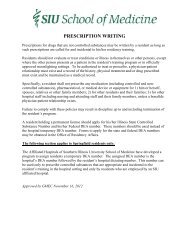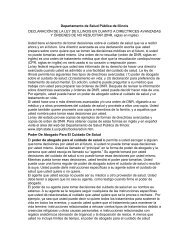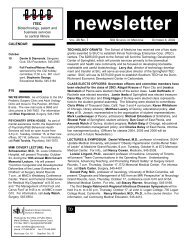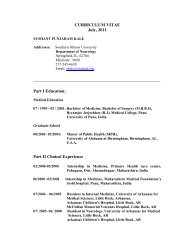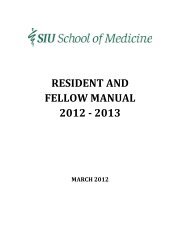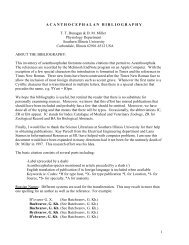Ch. 54 – Biliary System
Ch. 54 – Biliary System
Ch. 54 – Biliary System
Create successful ePaper yourself
Turn your PDF publications into a flip-book with our unique Google optimized e-Paper software.
sectable disease; however, intraoperatively, more than<br />
half of these patients are found to have either peritoneal<br />
or hepatic metastases or, more likely, locally unresectable<br />
disease. Selective use of laparoscopy in patients with<br />
locally advanced but potentially resectable perihilar cholangiocarcinoma<br />
may avoid laparotomy in some patients<br />
with metastatic disease. In patients who are found to<br />
have extensive metastatic disease, the preoperatively<br />
placed biliary stents should be left in place. However, a<br />
cholecystectomy should be performed to avoid the risk<br />
of acute cholecystitis, which occurs in patients with longterm<br />
indwelling biliary stents. In patients with locally<br />
advanced unresectable perihilar tumors, several operative<br />
approaches are available for palliation, including a<br />
Roux-en-Y hepaticojejunostomy to segment III or V.<br />
Distal cholangiocarcinoma—Distal lesions are<br />
usually treated with pancreaticoduodenectomy<br />
(Whipple’s procedure). A pylorus-preserving<br />
<strong>Ch</strong>apter <strong>54</strong> <strong>Biliary</strong> <strong>System</strong> 1585<br />
Figure <strong>54</strong>-37 Flow chart depicting the workup and treatment of a patient with suspected hilar cholangiocarcinoma.<br />
CT, computed tomography; ERCP, endoscopic retrograde cholangiopancreatography; MRCP; magnetic resonance<br />
cholangiopancreatography; PTC, percutaneous transhepatic cholangiography. (From Anderson CD, Pinson CW,<br />
Berlin J, <strong>Ch</strong>ari RS: Diagnosis and treatment of cholangiocarcinoma. Oncologist 9:43-57, 2004.)<br />
operation is preferable and feasible in most<br />
patients, with 5-year survival rates averaging 15%<br />
to 25%, but can be as high as <strong>54</strong>% in selected<br />
patients who undergo complete resection for<br />
node-negative disease. If resection is not possible<br />
owing to vascular encasement, cholecystectomy,<br />
Roux-en-Y hepaticojejunostomy proximal to the<br />
tumor, and a gastrojejunostomy to prevent gastric<br />
outlet obstruction should be performed.<br />
Intrahepatic cholangiocarcinoma—Intrahepatic<br />
cholangiocarcinoma is treated by hepatic<br />
resection, and outcomes depend on disease stage<br />
(particularly the status of the lymph nodes) and<br />
the ability to achieve negative margins. There is a<br />
broad range of long-term outcomes in patients<br />
undergoing complete resection (3-year survival<br />
rates of 22%-66%).<br />
Perihilar cholangiocarcinoma—For perihilar<br />
cholangiocarcinomas, bile duct resection alone



